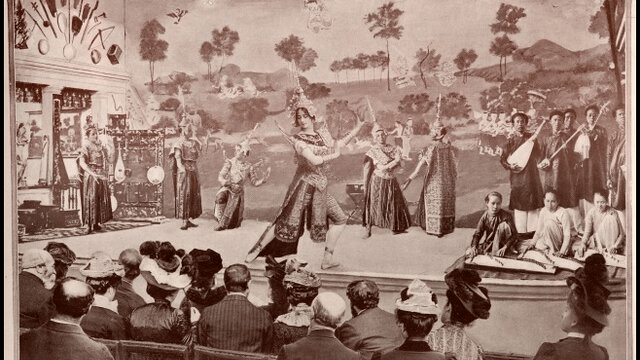
The first Western score of Tài tử music: historical contexts, interpretation, and hypothesis
Abstract
Tài tử music emerged in Southern Vietnam during the nineteenth century. The first Tài tử music performance in the West was part of the theatrical production La Bague Enchantée (The Magic Ring) at the 1900 Paris World Exposition where the famous French ballerina Cléo de Mérode and her dancers performed a Cambodian dance accompanied by Vietnamese musicians. This event attracted so much attention from the French media, the musicologist Julien Tiersot wrote in his review: “Is it necessary to recall once again the Cambodian dance which, was accompanied by the musicians from very truly Cochinchina?” Tiersot met the leader of the Vietnamese musicians who helped Tiersot notate “the fundamental repertoire of (Tài tử) music performed at the Exposition” which was later published as Danse de l’Indo-chine (Dance of Indochina). To date, this 125 years old notation is the first published Western music score of Tài tử music.
This lecture will discuss the historical contexts which led to the collaboration between European dancers and Vietnamese musicians. A comparative study will highlight the similarities between the musical materials found in Tiersot’s notation and the Tài tử classic Ancient Repertoire which is still currently performed in Vietnam. Based on the study, this lecture will identify the Tài tử modes, ornamentations and expressive techniques which were not included in the score. The discussion will be accompanied by demonstrations on traditional Vietnamese music instruments. Based on new findings, this lecture will also explore the hypothesis that Danse de l’Indo-chine reflects the performance order of Tài tử musical items in the theatrical production La Bague Enchantée. This ordering of musical materials may well have been chosen to support the dramatic storyline of the production.
Dr Le-Tuyen Nguyen
Dr Le-Tuyen Nguyen is an Australian composer, researcher, and teacher. Born in South Vietnam and settled in Sydney in the 1990s, he studied music and education at the University of New South Wales and completed his doctorate at the Australian National University. He has worked in leadership positions within the New South Wales Department of Education and a Teaching Fellowship at the Australian National University School of Music. More information: https://nguyenletuyen.wordpress.com
This event will be held both on-campus and online via Zoom. Click here to join the seminar on Zoom.
Location
Contact
- ANU School of Music+61 2 6125 5700